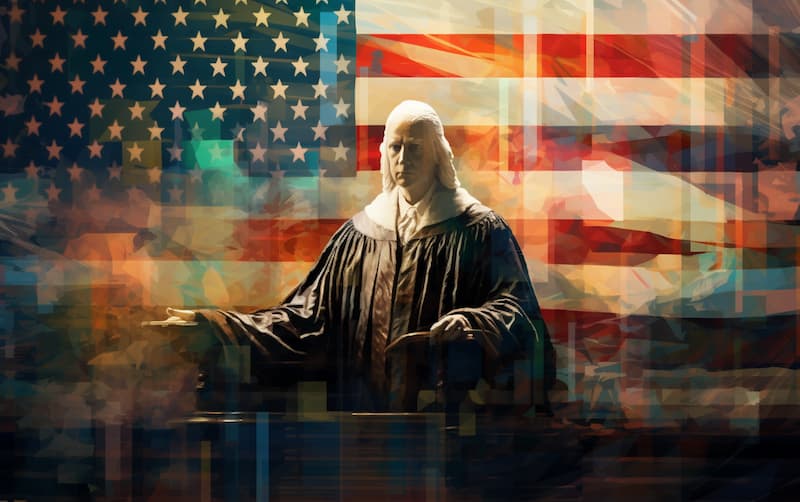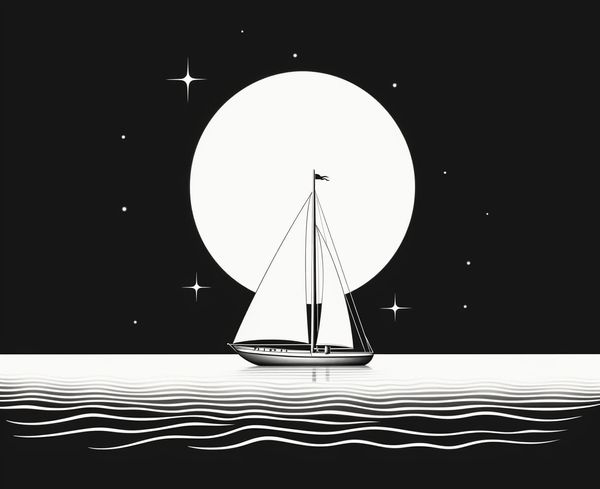And the debate surrounding the copyrightability of AI-created art intensifies. A recent ruling by a federal judge, upholding the U.S. Copyright Office's stance that art created by AI is not eligible for protection, underscores the enduring principle that human authorship remains a foundational requirement for copyright protection.
The Nature of AI-Created Art and Intellectual Property
The Concerns Raised by AI in Hollywood
With the writers' strike surpassing 100 days, there is increasing anxiety in Hollywood over the potential of studios using generative artificial intelligence to script entire films. The underlying fear is that AI could replace human creativity and artistry in the production of movies. However, the long-standing tenet of intellectual property law asserts that copyrights are exclusive to works crafted by humans.
AI and Copyright: The Legal Perspective
A landmark ruling recently emerged when a federal judge reaffirmed the U.S. Copyright Office's decision that artworks generated by AI cannot be copyrighted. This decision came in light of Stephen Thaler's endeavour to challenge this stance, asserting that copyright law should adapt to encompass works produced by evolving technologies that function without direct human intervention. The ruling by U.S. District Judge Beryl Howell emphasized that human authorship has always been, and remains, a foundational requirement for copyright protection.
The Push for AI Art Protection
Stephen Thaler's Advocacy
Stephen Thaler, the CEO of neural network company Imagination Engines, has been at the forefront of advocating for the protection of AI-created works. He went as far as listing an AI system, the Creativity Machine, as the exclusive creator of an artwork titled "A Recent Entrance to Paradise". The artwork was described as being autonomously crafted by a computer algorithm. The U.S. Copyright Office rejected the application, emphasizing the intrinsic connection between human intellect and creative expression as vital for copyright protection.
Legal Arguments and Challenges
Thaler's legal challenge centered on the assertion that AI should be recognized as an author if it meets the established criteria for authorship. He posited that ownership should then be vested in the owner of the AI system. Thaler's contention was that the Copyright Office's denial was inconsistent with the law, specifically the Administrative Procedure Act which offers a mechanism for the judicial review of agency decisions. The crux of the lawsuit revolved around the question of whether a work generated solely by a machine can be protected under copyright law. Judge Howell's response was unequivocal: without human involvement in a work's creation, it cannot be copyrighted.
Historical Precedence and Purpose of Copyright Law
Past Cases and Rulings
The recent ruling aligns with historical precedents. For instance, in the case of Burrow-Giles Lithographic Company v. Sarony, the Supreme Court affirmed that copyrights could be extended to photographs if they represent the original intellectual conceptions of the author.
The Court explicitly referred to authors as humans. Similarly, in another case, a photograph taken by a monkey was deemed ineligible for copyright protection. Judge Howell's ruling echoed these sentiments, emphasizing that no court has ever recognized a non-human origin work as copyrightable.
The Fundamental Objective of Copyright Law
Delving into the purpose of copyright law, Judge Howell highlighted its primary objective: to motivate human individuals to engage in creative endeavours. Copyrights and patents were conceived as forms of property that the government protects, recognizing exclusive rights in this property to further the public good by incentivizing human creation. The essence of human creation and the encouragement of human innovation have been central to American copyright since its inception. This law, as Judge Howell stated, was never intended to cater to nonhuman entities.
Implications and Future Considerations
AI Training on Copyrighted Works
The ruling comes at a time when the legality of AI companies training their models on copyrighted works is under scrutiny. These lawsuits, filed by artists in California federal court, claim copyright infringement and could compel AI firms to discard their extensive language models.
The Copyright Office's Stance on AI-Assisted Materials
While the Copyright Office has confirmed that most AI-generated works aren't eligible for copyright, there are exceptions when AI-assisted materials are involved. If a human has "selected or arranged" a work in a way that is distinctly creative, resulting in an original piece of authorship, then it can be considered for copyright.
Key Points from the Court Ruling on AI-Created Art
Background of the Case
- The plaintiff, Stephen Thaler, developed an AI system known as the "Creativity Machine" which autonomously produced a piece of visual art titled "A Recent Entrance to Paradise."
- Seeking to copyright the artwork, Thaler applied to the Copyright Office, listing the Creativity Machine as the sole author and positioning himself as the copyright owner by virtue of owning the machine.
Denial by the Copyright Office and Subsequent Court Challenge
- The Copyright Office refused the application, asserting that human authorship is a prerequisite for copyright protection and thereby, works generated by non-humans cannot be copyrighted.
- Disagreeing with this stance, Thaler initiated legal proceedings against the decision under the Administrative Procedure Act (APA).
Court's Judgment
- The court sided with the Copyright Office, emphasizing that the essence of the Copyright Act and historical precedent necessitates human authorship for copyright eligibility.
- The court elucidated that the primary objective of copyright is to promote and incentivize human creativity. Consequently, works produced without human intervention have never been encompassed under copyright protections.
- Thaler's arguments suggesting that he should possess the copyright based on property law or the principles of work-for-hire were dismissed. The court's rationale was that a valid copyright never existed for the AI-generated artwork in the first place.
- The judgment firmly established that for a work to be eligible for copyright, it must owe its origin to human creativity in some capacity. Even though AI can serve as a tool for artists, works created autonomously by AI without human involvement are not entitled to copyright protection.
Other Noteworthy Points
- New Facts on Judicial Review: Thaler tried to introduce new evidence during the judicial review, suggesting he played a more significant role in guiding the AI system than previously stated. However, the court maintained that the review should be restricted to the records available to the Copyright Office.
- Ambiguity in "Authorship": Thaler argued that the term "authorship" is ambiguous since the Copyright Act does not explicitly define "author". The court, however, believed that the clear meaning, historical context, and existing precedents conclusively link authorship with human creation.
- Potential Copyright for Non-Human Sentient Beings: The court briefly deliberated on whether copyrights could ever apply to creations by non-human sentient entities. This idea was dismissed as mere "fun conjecture for academics."
- AI-Assisted Art: The ruling left unanswered questions regarding copyright law's stance on AI-assisted art where there's collaboration between humans and AI tools. The court recognized the intricacies associated with this issue, especially as AI becomes increasingly integrated into creative processes.
- Examples and Analogies: The court drew parallels with photography and divine revelation, emphasizing that copyright has not extended to purely mechanical reproductions or divine dictations without the presence of human creativity.
- Focus on Copyrightability: The judgment only tackled the question of copyrightability. Thaler's contentions regarding copyright ownership and transferability were not addressed, given that the court found no valid copyright for the AI-generated artwork.
In essence, while the ruling firmly establishes the need for human involvement in the creative process for copyright protection, it also acknowledges the evolving complexities as AI systems become more sophisticated and integral to artistic endeavors. The door remains open for further evolution of copyright law in response to advancing technologies.
Takeaway
As the world continues to grapple with the implications of AI in the realm of art and creativity, the legal system is clear on its stance: human authorship remains paramount. While AI offers unprecedented opportunities for innovation and creation, the essence of human creativity and its protection under the law remains undiminished.







